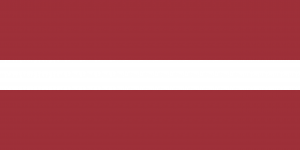Language/Standard-latvian/Grammar/Pronouns
Hi Standard Latvian learners! 😊
In today's lesson, we will be discussing pronouns in Standard Latvian. Pronouns are an important part of the language and can be used to refer to people, places, things, and ideas. We will look at the different types of pronouns, how they are used, and some examples of their usage.
Personal Pronouns
Personal pronouns are used to refer to people or things. They can be either singular or plural, and can be either masculine, feminine, or neuter.
Singular
The singular personal pronouns are:
- Es (I)
- Tu (You)
- Viņš (He)
- Viņa (She)
- Tā (It)
Plural
The plural personal pronouns are:
- Mēs (We)
- Jūs (You)
- Viņi (They)
Possessive Pronouns
Possessive pronouns are used to indicate ownership or possession. They can also be used to indicate a relationship between two people or things.
Singular
The singular possessive pronouns are:
- Mans (My)
- Tava (Your)
- Viņa (His)
- Viņas (Her)
- Tā (Its)
Plural
The plural possessive pronouns are:
- Mūsu (Our)
- Jūsu (Your)
- Viņu (Their)
Demonstrative Pronouns
Demonstrative pronouns are used to point out or identify a person or thing. They can be either singular or plural, and can be either masculine, feminine, or neuter.
Singular
The singular demonstrative pronouns are:
- Šis (This)
- Tas (That)
- Šī (This)
- Tā (That)
Plural
The plural demonstrative pronouns are:
- Šie (These)
- Tie (Those)
- Šīs (These)
- Tās (Those)
Interrogative Pronouns
Interrogative pronouns are used to ask questions. They can be either singular or plural, and can be either masculine, feminine, or neuter.
Singular
The singular interrogative pronouns are:
- Kas (Who)
- Kāds (What)
- Kurš (Which)
Plural
The plural interrogative pronouns are:
- Kas (Who)
- Kādi (What)
- Kuri (Which)
If you have any questions, please ask them in the comments section below.
Feel free to edit this wiki page if you think it can be improved. 😎

